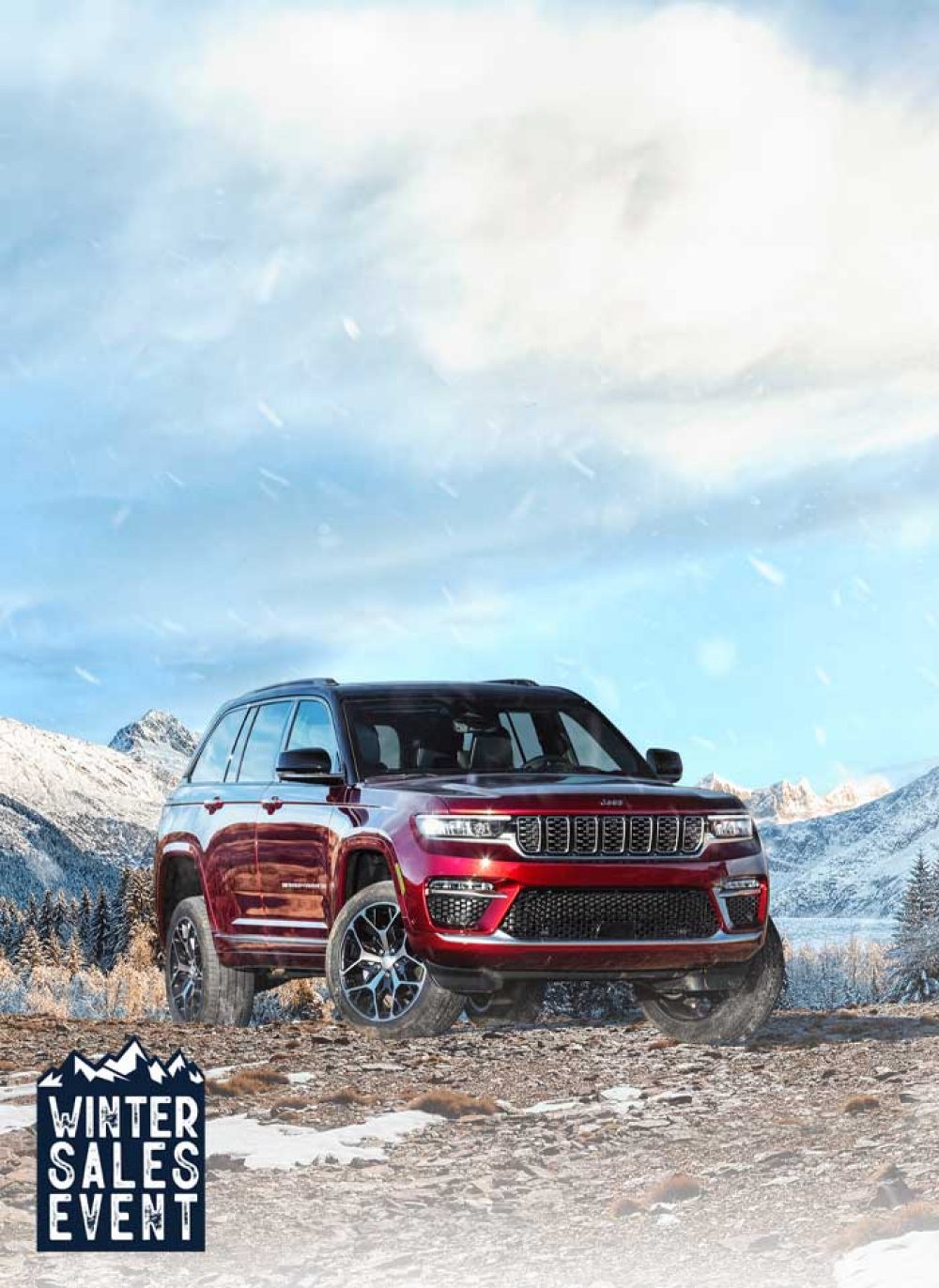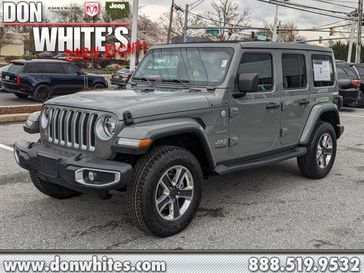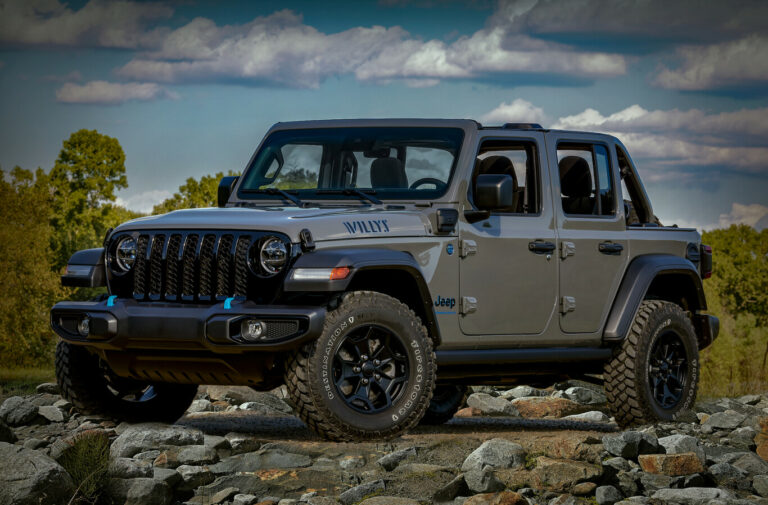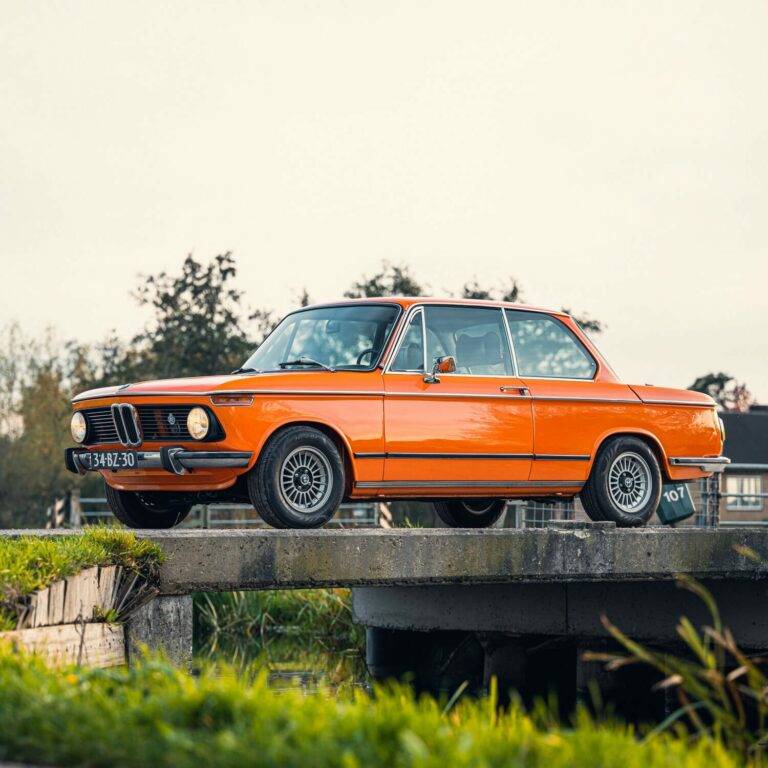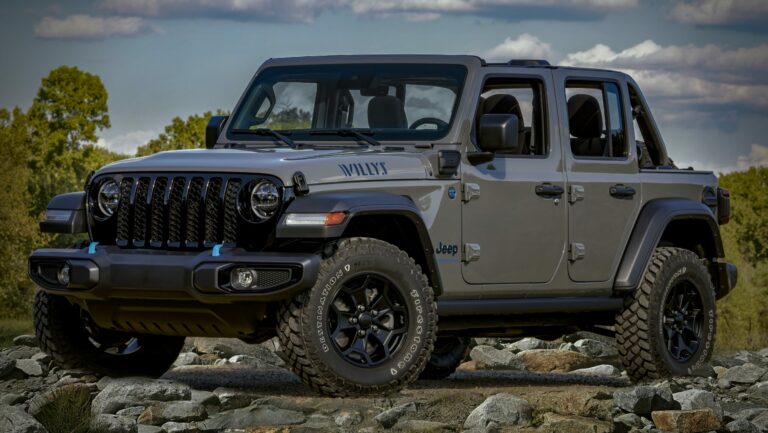Jeep Wrangler V6 Engine For Sale: Your Ultimate Guide to Finding and Installing the Perfect Powerplant
Jeep Wrangler V6 Engine For Sale: Your Ultimate Guide to Finding and Installing the Perfect Powerplant jeeps.truckstrend.com
The Jeep Wrangler is more than just a vehicle; it’s an icon of adventure, freedom, and rugged capability. At the heart of its legendary performance lies a robust engine, and for many, the V6 powerplant represents the ideal balance of power, efficiency, and reliability. Whether you’re facing a catastrophic engine failure, looking to breathe new life into a high-mileage beloved JK or JL, or planning an exciting project build, the search for a "Jeep Wrangler V6 Engine For Sale" is a journey many enthusiasts undertake. This comprehensive guide will navigate you through every aspect of acquiring, understanding, and even installing a V6 engine for your Wrangler, ensuring you make an informed decision that keeps your adventure machine roaring.
The Enduring Appeal of the Wrangler V6
Jeep Wrangler V6 Engine For Sale: Your Ultimate Guide to Finding and Installing the Perfect Powerplant
For decades, the V6 engine has been the cornerstone of the Jeep Wrangler’s powertrain lineup. From the venerable 3.8L V6 found in early JK models (2007-2011) to the ubiquitous and highly praised 3.6L Pentastar V6 introduced in 2012 and continuing through the JL generation, these engines have powered countless off-road escapades and daily commutes.
The V6 engine’s popularity stems from several key attributes:
- Reliability: Both the 3.8L (despite some oil consumption concerns in early models) and especially the 3.6L Pentastar are known for their durability when properly maintained.
- Balanced Performance: They offer ample horsepower and torque for tackling challenging trails, merging onto highways, and towing light loads, without the higher fuel consumption of larger V8 alternatives.
- Aftermarket Support: Being factory-equipped engines, there’s extensive aftermarket support for parts, upgrades, and diagnostic tools.
- Cost-Effectiveness: Compared to engine swaps involving different manufacturers or high-performance V8s, replacing a V6 with another V6 is generally more straightforward and economical.

Common reasons for seeking a replacement V6 engine include reaching high mileage thresholds where a rebuild isn’t cost-effective, catastrophic failures like thrown rods or cracked blocks, or simply wanting a fresh start for a project vehicle.
Where to Find a Jeep Wrangler V6 Engine For Sale
The market for replacement engines is diverse, offering various options depending on your budget, urgency, and desired level of risk.
1. New Crate Engines (Mopar or Aftermarket)
- Description: These are brand-new engines, often sold directly by Mopar (Chrysler’s parts division) or reputable aftermarket performance companies. They come complete, or as long blocks, ready for installation.
- Pros: Zero miles, full manufacturer warranty, highest reliability.
- Cons: Most expensive option.
- Best for: Those seeking ultimate peace of mind, professional shops, or restoration projects where authenticity is key.

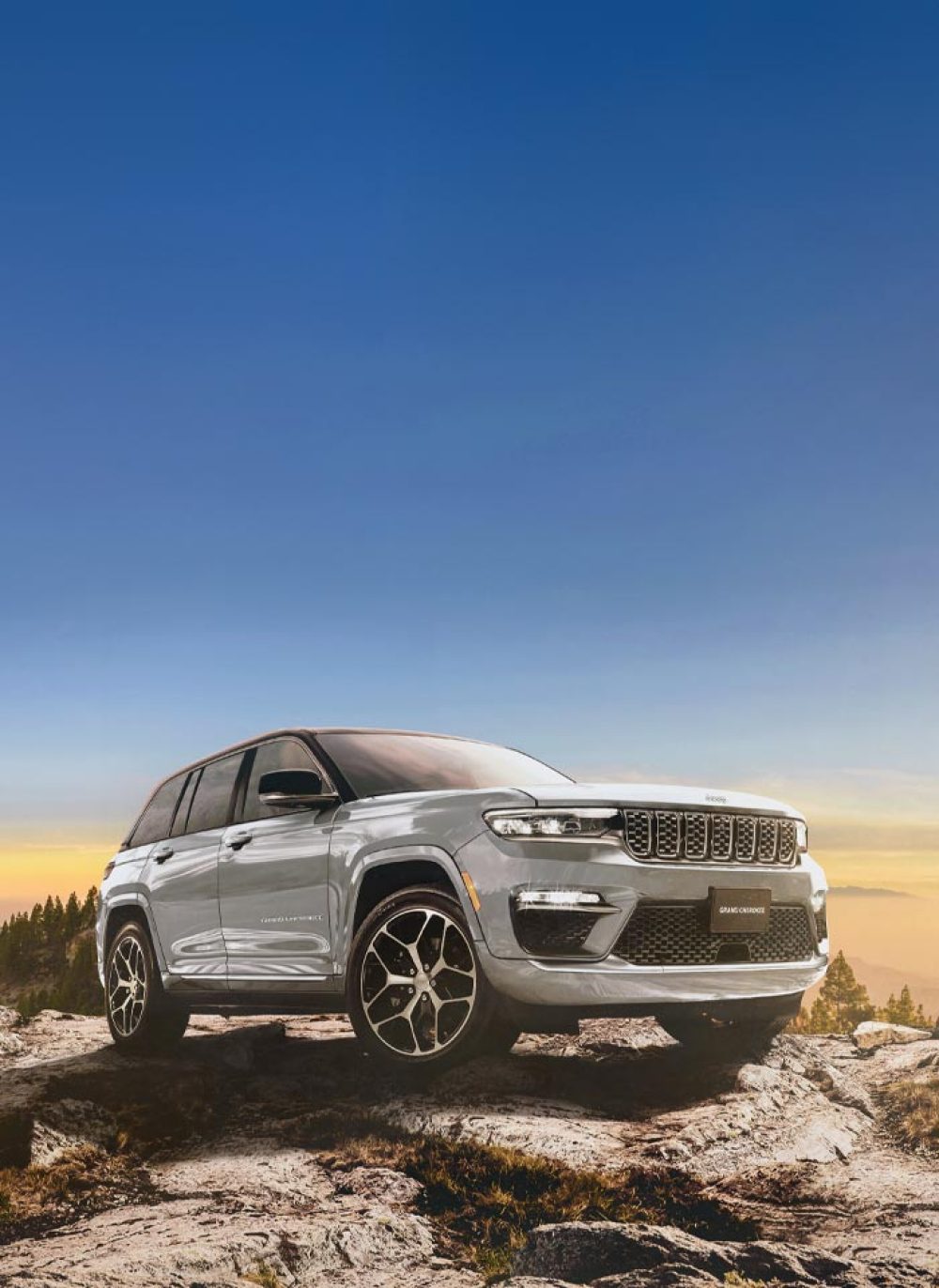
2. Remanufactured/Rebuilt Engines
- Description: These engines have been disassembled, inspected, worn components replaced (pistons, rings, bearings, seals), and reassembled to meet or exceed original factory specifications. They often come with a warranty.
- Pros: More affordable than new, often come with a good warranty (1-3 years), components are new or reconditioned.
- Cons: Quality can vary between rebuilders, though reputable ones are excellent.
- Best for: Most common scenario for engine replacement, offering a good balance of cost and reliability.
3. Used Engines (Salvage Yards, Online Marketplaces, Private Sellers)
- Description: Pulled from wrecked vehicles, often referred to as "junkyard engines" or "pull-outs." Their condition varies wildly.
- Pros: Cheapest option, immediate availability.
- Cons: No warranty or very limited, unknown history, potential for hidden damage or high wear.
- Best for: Budget-constrained projects, experienced DIYers who can thoroughly inspect an engine, or those willing to take a higher risk.
4. Engine Swaps (Considering Different V6 Generations)
- Description: While often involving V8s, some enthusiasts consider swapping a 3.6L Pentastar into an older JK that originally had a 3.8L. This is a complex undertaking.
- Pros: Significant power and efficiency upgrade for older models.
- Cons: Requires extensive modifications (wiring harness, ECU, transmission adapter, exhaust, motor mounts), significantly higher cost and complexity than a direct replacement.
- Best for: Advanced DIYers or professional shops specializing in engine conversions.
Key Considerations When Buying a V6 Wrangler Engine
Purchasing an engine is a significant investment. Careful consideration of these factors will save you headaches and money in the long run.
1. Engine Type and Compatibility
- 3.8L vs. 3.6L Pentastar: These are not directly interchangeable without significant modifications. Ensure you buy the correct engine for your Wrangler’s year and original powertrain.
- Year-Specific Variations: Even within the 3.6L Pentastar family, there might be minor sensor or wiring differences depending on the year (e.g., early JK Pentastars vs. later JL Pentastars). Always verify the exact year and model compatibility.
- Transmission Compatibility: Ensure the engine you’re buying is compatible with your existing automatic or manual transmission.
2. Condition and Warranty
- New: Comes with a full manufacturer warranty.
- Remanufactured: Crucially, inquire about the warranty. Reputable remanufacturers offer 1-3 year warranties. Understand what the warranty covers (parts, labor, towing) and what voids it.
- Used: Expect little to no warranty. If a short "start-up" warranty (e.g., 30 days) is offered, use that time to thoroughly test the engine. For used engines, ask for mileage, VIN of the donor vehicle, and ideally, compression test results or a video of it running.
3. Completeness of the Engine
- Long Block: Typically includes the block, crankshaft, pistons, connecting rods, cylinder heads, camshafts, and timing components. It does not include intake manifold, exhaust manifolds, alternator, power steering pump, AC compressor, wiring harness, or ECU.
- Complete Engine: Includes the long block plus most or all of the accessories (intake, exhaust, sensors, sometimes even throttle body, injectors, etc.).
- Your Choice: A long block is cheaper but requires transferring many components from your old engine. A complete engine is more expensive but simplifies installation. Factor in the condition of your existing accessories.
4. Seller Reputation
- Reviews: Check online reviews for the seller, whether it’s a dedicated engine supplier, a salvage yard, or a private individual.
- Certifications: Some remanufacturers are ASE certified or have other industry recognitions.
- Transparency: A good seller will be transparent about the engine’s history, condition, and warranty terms.
5. Budget
Determine your maximum budget. This will narrow down your options significantly. Remember to factor in shipping costs, potential core charges (for remanufactured engines, where you return your old engine), and installation costs if you’re not doing it yourself.
The Buying Process: A Step-by-Step Guide
- Determine Your Needs: Are you replacing a failed engine or upgrading? What’s your budget?
- Research Compatible Engines: Confirm the exact engine code and year compatibility for your Wrangler.
- Identify Potential Sellers: Search online (eBay, Craigslist, dedicated engine suppliers like Jasper Engines, Fraser Engines, Powertrain Products, local salvage yards).
- Ask Crucial Questions:
- What’s the engine’s history (mileage, donor vehicle VIN if used)?
- What’s included (long block, complete, accessories)?
- What’s the warranty? What voids it?
- What are the shipping costs and lead times?
- Is there a core charge?
- Inspect (If Used): If buying a used engine locally, inspect it thoroughly for cracks, leaks, signs of severe overheating, or sludge in the oil.
- Verify Details (If New/Reman): Confirm part numbers, warranty terms, and shipping arrangements.
- Negotiate: Don’t be afraid to negotiate, especially for used engines.
- Arrange Shipping/Pickup: Ensure safe transport, especially for heavy engine components.
Installation and Post-Purchase Tips
Professional Installation vs. DIY
Engine replacement is a complex job requiring specialized tools, mechanical knowledge, and often, an engine hoist.
- Professional: Recommended for most owners. Ensures proper installation, often comes with a labor warranty.
- DIY: Feasible for experienced mechanics with the right tools and space. Be prepared for a multi-day project.
Ancillary Parts to Consider Replacing
Even with a complete engine, it’s wise to replace certain wear items while everything is accessible:
- Water pump, thermostat, serpentine belt, tensioner.
- Spark plugs, ignition coils (if not included).
- Engine mounts.
- All fluids (oil, coolant).
- Hoses and clamps (radiator, heater).
- Sensors (O2, crank position, cam position) – often good to replace if not new with the engine.
Break-in Procedures
For new or remanufactured engines, follow the manufacturer’s recommended break-in procedure. This usually involves varying RPMs, avoiding prolonged idling or heavy loads, and an early oil change.
ECU Re-flashing/Tuning
Depending on the exact engine and your Wrangler’s year, you may need to re-flash your Engine Control Unit (ECU) to ensure proper communication and performance. This is especially true for engine swaps or if there are minor year-to-year differences in sensors.
Potential Challenges and Solutions
- Finding the Right Engine: Specific year or rare engine types can be hard to source.
- Solution: Expand your search to national suppliers, consider remanufactured options, or be patient.
- Shipping Costs and Logistics: Engines are heavy and bulky.
- Solution: Get multiple shipping quotes, consider local pickup, or factor freight shipping into your budget.
- Hidden Problems with Used Engines: A "running" engine from a donor vehicle can still have issues.
- Solution: Insist on a short warranty, perform a compression test before buying, or opt for remanufactured for less risk.
- Installation Complexities: DIY can be overwhelming.
- Solution: Don’t hesitate to seek professional help. If DIY, invest in a good service manual and the right tools.
- Emissions Compliance: Some states have strict emissions laws.
- Solution: Ensure any replacement engine meets your state’s requirements, especially if considering a non-stock swap.
Jeep Wrangler V6 Engine For Sale: Estimated Price Guide
Prices are highly variable based on condition, completeness, seller, and market demand. These are general estimates for common 3.6L Pentastar and 3.8L V6 engines.
| Engine Type | Condition | Estimated Price Range (USD) | Typical Warranty | Notes |
|---|---|---|---|---|
| 3.8L V6 | Used (High Miles) | $800 – $1,500 | As-is / 30-day start-up | Pulled from donor vehicles. Condition highly variable. Best for budget builds or if you’re prepared for a rebuild. |
| (2007-2011 JK) | Remanufactured | $2,500 – $3,500 | 1-3 years | Rebuilt to factory specs. Good balance of cost and reliability. Often requires core return. |
| New Crate | $4,000 – $5,500+ | 3 years / 36k miles | Less common to find new 3.8L engines now, but some Mopar sources or specialty shops might have them. | |
| 3.6L Pentastar | Used (Varies) | $1,500 – $3,000 | 30-90 day start-up | From donor vehicles. Mileage significantly impacts price. Lower mileage engines will be at the higher end. |
| (2012-Present JK/JL) | Remanufactured | $3,500 – $5,000 | 3 years / 100k miles | Most popular option for replacement. High quality rebuilds, often better than original in some aspects. Core return typically required. |
| New Crate | $5,500 – $7,500+ | 3 years / 36k miles | Mopar new crate engines. The most reliable and longest-lasting option, but also the most expensive. Ideal for long-term ownership or professional shops. |
Note: Prices do not include shipping, core charges (if applicable), or installation labor. These are estimates and can fluctuate based on market demand, location, and specific engine completeness (long block vs. complete engine).
Frequently Asked Questions (FAQ)
Q1: What’s the difference between a "long block" and a "complete engine"?
A1: A long block typically includes the engine block, crankshaft, pistons, connecting rods, cylinder heads, camshafts, and timing components. It does not include external accessories like the intake manifold, exhaust manifolds, alternator, starter, power steering pump, or A/C compressor. A complete engine usually includes most or all of these external components.
Q2: Can I put a 3.6L Pentastar engine into my older 2007-2011 JK that came with a 3.8L?
A2: Yes, it’s technically possible, but it’s a complex and costly engine swap. It requires significant modifications to the wiring harness, ECU, transmission bell housing, motor mounts, exhaust, and potentially other systems. This is not a direct bolt-in replacement and is usually only undertaken by advanced DIYers or specialized swap shops.
Q3: How much does professional engine installation typically cost?
A3: Installation costs vary widely by region and shop, but you can generally expect to pay anywhere from $1,500 to $3,000+ for labor. This usually does not include the cost of the engine itself or any additional parts (fluids, hoses, etc.) that need to be replaced during installation.
Q4: What’s considered good mileage for a used V6 engine?
A4: For a used engine, lower mileage is always better. For a Pentastar, anything under 70,000-80,000 miles is generally considered good. For the older 3.8L, under 100,000 miles is decent. However, service history and maintenance are more important than mileage alone.
Q5: Do I need to re-flash my ECU after an engine swap?
A5: For a direct replacement of the exact same engine (e.g., 3.6L for 3.6L), typically no re-flash is strictly necessary, but a diagnostic scan and clearing of old codes is recommended. For engine swaps (e.g., 3.8L to 3.6L), a new ECU and extensive re-flashing/tuning are absolutely required.
Conclusion
Finding a "Jeep Wrangler V6 Engine For Sale" can seem like a daunting task, but with the right knowledge and a methodical approach, it becomes a manageable and even rewarding process. The V6 engine is the heart of your Wrangler’s capability, providing the reliable power needed for both daily driving and thrilling off-road adventures. By carefully researching your options, understanding the different types of engines available, considering critical factors like condition and warranty, and planning for installation, you can confidently acquire the perfect powerplant. With a new or remanufactured V6, your Jeep Wrangler will be ready to tackle countless more miles and conquer new horizons, ensuring your spirit of adventure never runs out of horsepower.
